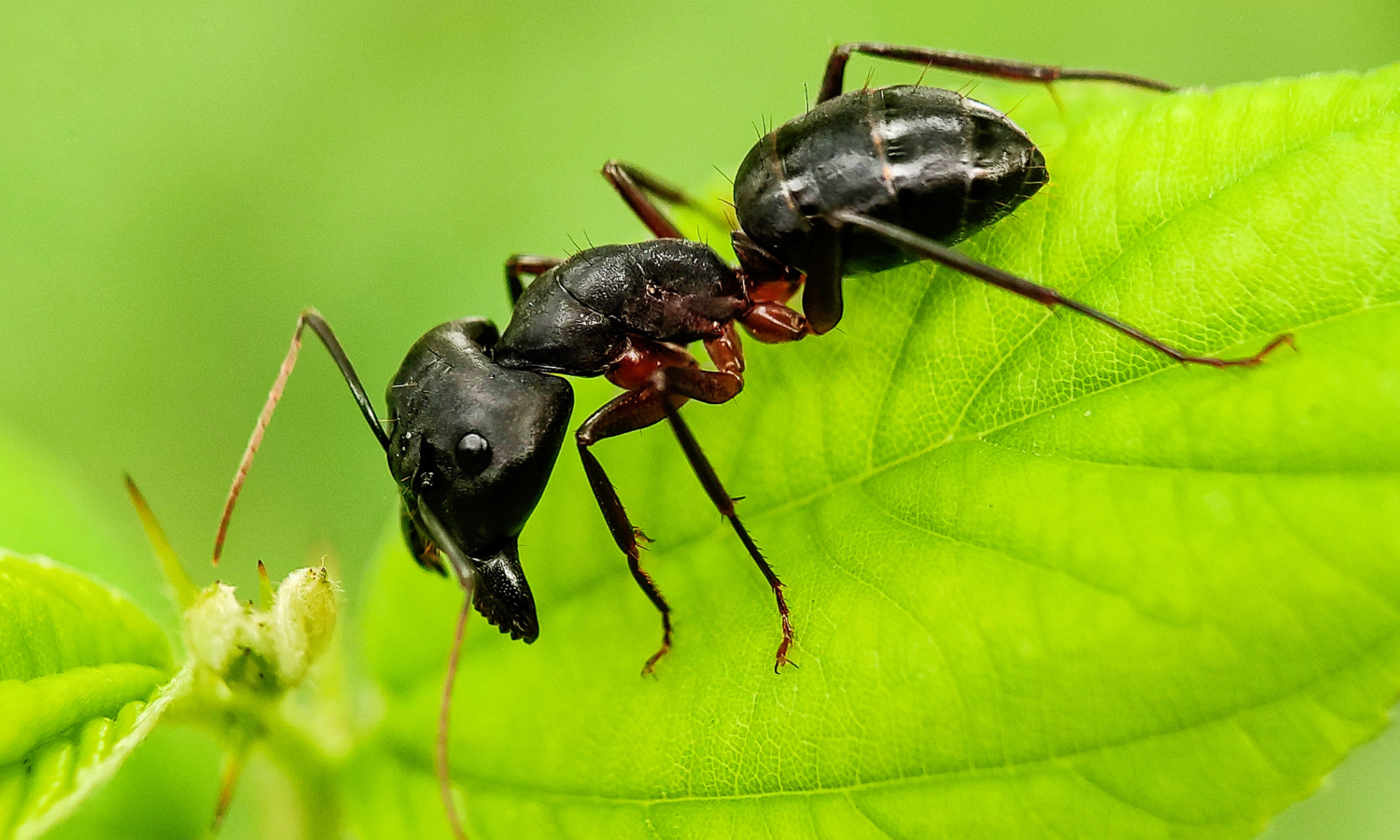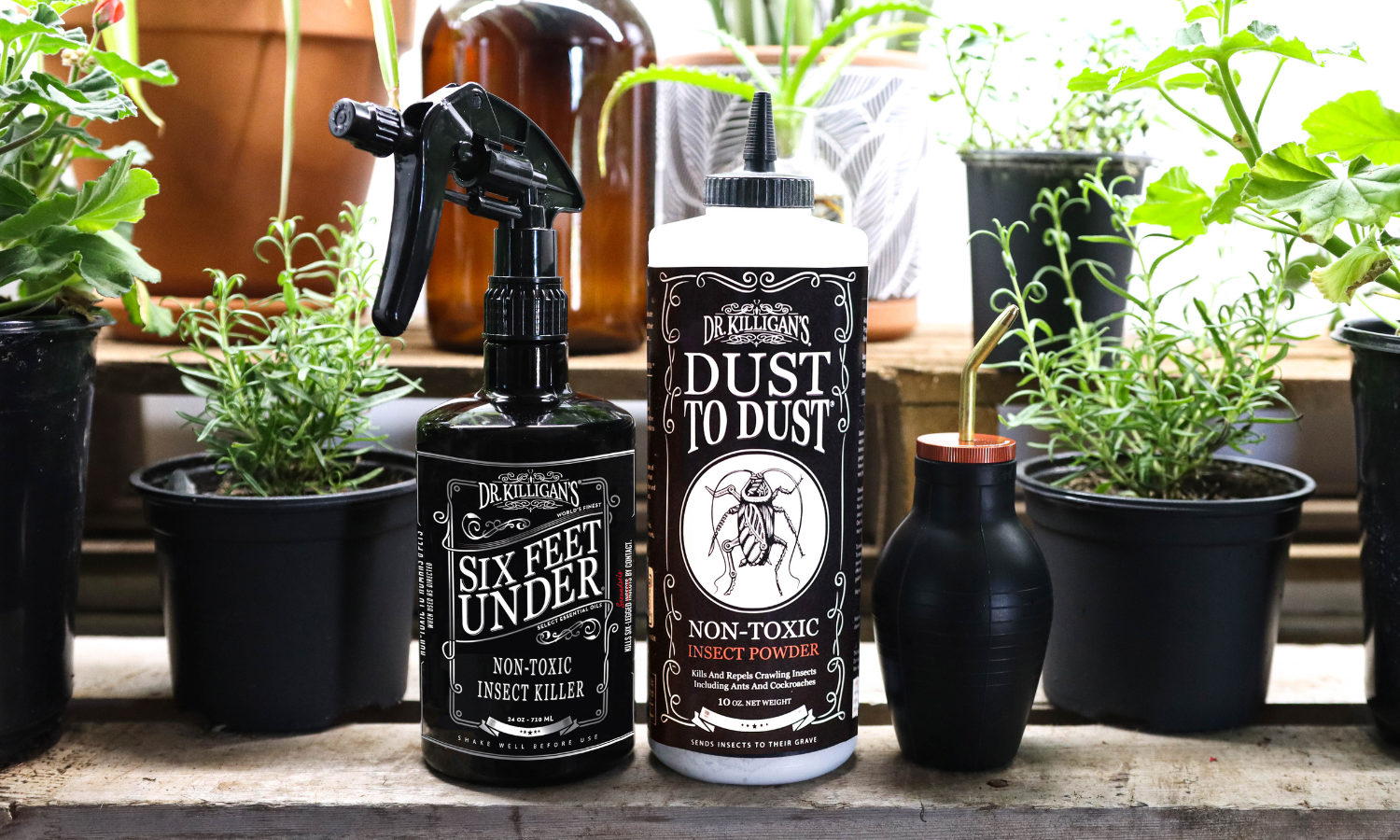Ants are one of the hardest working insects. They work long hours and die pretty young. (Most worker ants burn out and die after about a year.) They’re also great at building and protecting their homes. If they decide to make home in your house, you’ll quickly have an infestation on your hands. In order to prevent an ant attack from happening, it’s important to get to know these little creatures, understanding their social structure and how they live.
Different types of ants
There are thousands of species of ants across the world. They all are social creatures, live in colonies, and have similar habits. These are the four most common types of ants found around the home:
Sugar ants

There are "outdoor" sugar ants and then there are "indoor" sugar ants. We’re going to focus in on three of these indoor types: pharaoh ants, pavement ants, and odorous house ants.
They like sweet treats. They are quite tiny. They are famous for crowding around sugary delights like candy, ice cream, or spilled soda. These super human strength insects enter homes through the tiniest of cracks in the foundation or through openings in the exterior wall, such as holes made for venting, drains, or cables.
But beware: If sprayed, the pharoah ants will disperse and bud into multiple colonies. Use Dr. Killigan's Insect Buster® to win this battle. Fill it with Dust To Dust, an effective powder that is non-toxic to children or pets, yet destroys ants.
Pavement ants
They sting. They bite. They like greasy foods (but will eat most foods that people consume). Beware that they will set up trails from their nest to nearby food sources. Note that that "food source" may be in your home.
Carpenter ants
They chew wood. They’re big. They’re black or blackish-red in color. They have a node between their thorax and abdomen. If you see a single one of these crawling around your home, it may be your only sign of an infestation, as their presence in your home can go largely undetected. These insects don’t sneak into your pantry for a nibble. In fact, they don’t have to eat anything in your pantry to survive, living quite comfortably off of food sources that exist outside of your home.

Issues arise when a colony matures, producing winged (yes, wings) male and female alates. These winged, flying ants will suddenly appear on your window panes. When this happens, you can be sure of two things: 1) You have a mature colony inside of the walls of your home; and 2) they’re about to explode in numbers.
How did they get in? They chewed their way through wet damaged wood or or gained access through cracks around doors and windows. These little invaders can also crawl in by means of shrubs, overhead wires, or trees overhead that touch your home far above the ground.
Fire ants
They’re bright—fire-colored. They’re very grumpy, easily aggravated, and like to bite. Once they’ve grabbed ahold of your flesh, they sting. They’re omnivores (which basically means they’ll eat anything). They typically stay outdoors and their nests having visible mountings above the ground. But, during periods of extreme outdoor heat, drought, or torrential rains, they’ll venture indoors. Be mindful of potential entry points, like small exterior holes from broken siding or vents in bricks.
The life cycle of an ant
Like all social insects (i.e. bees, wasps, and hornets), ants undergo a metamorphosis in four life stages: egg, larvae, pupa, and adult. The queen mates, nests, lays eggs, and then produces her workers, creating a colony of her own. Even as the colony grows and her work appears done, the queen remains on her throne. She is essential, after all, for normal colony life, as the chemical messages she produces controls the activities of all workers in the nest.
Now, let’s talk about that life cycle:
Egg

Ant eggs are the size of a pen dot and grow quickly. Fertilized eggs become female workers. Unfertilized eggs become male ants.
Larvae
After hatching, they resemble maggots, having no eyes or legs. They are cared for by worker ants and molt several times as they grow. This stage typically lasts between seven and 14 days.
Pupae
Some species spin protective cocoons during this stage; others do not. Either way, the metamorphosis include the forming of an ant’s legs and antennae, which are folded against its body as it grows. This stage will last a few weeks.
Adult
Once the pupal stage is complete, the adult ant emerges. Once their exoskeleton hardens, which takes a few mere hours, the ants get right to work doing their assigned tasks. If the colony is just beginning, a worker’s job is for expansion. If it is an existing colony, then a worker’s job will be based on the age of the ant.
Ant jobs
Adult ant tasks are based on three distinctions:
Workers
Worker ants are female. Their job is to tend to the queen, expand the nest, care for the eggs, and forage for food outside the nest. These tasks are divided based on the age of the ant. The newly hatched stay close to the nest; the older generation forage.
Males
These are the unfertilized eggs. Males have only one task: Mate with the queen. They have a very short life span. They mate. They die.
Queens
Once the queen begins to form her own colony, she will tear off her wings. They are no longer needed to fly around and pursue males to mate. For the remainder of life, which may be 15 years or more, she will stay in her nest and lay eggs. The workers will caringly tend to all of her needs. She is the most important ant in the colony: the mother of all ants and the source of life and future for the colony. When she dies, the colony also dies.
How to rid my home of ants
Have you spotted ants in your home? Ants are invasive. Carpenter ants, in particular, can do serious damage to the wood in your home. But who wants any type of ant in their abode? To dispose of them quickly, I recommend our kill-on-contact spray. Dr. Killigan’s Six Feet Under® is a non-toxic all-natural ant spray. It is a proven method to rid your home of ants (as well as roaches, flies, mosquitoes, moths, mites, silverfish, and more). Our team of professionals is dedicated to perfecting the art of Killing Them Softly®. We have designed a 100% toxin-free ant spray that is not only safe for the entire family (pets included), but it is also created with style, restoring Peace & Sanity in your home.

Looking for a more long-term solution? Dr. Killigan’s Insect Buster® is designed to disperse Dust to Dust. Dust to Dust, a powder insecticide that is non-toxic and non-poisonous, is proven to have kill times of up to 50% faster than diatomaceous earth. It is known to be safe for humans, pets and plants. Simply spread this safe extermination solution where the ants are entering and these little varmints will soon be a thing of the past.
We, at Dr. Killigan’s, are continually raising the bar in toxin-free pest control remedies. All our products come in a design that is pleasing to the eye and carry a 100% satisfaction guarantee. If you are not satisfied for any reason, please contact us. We will not hesitate to make things right.










